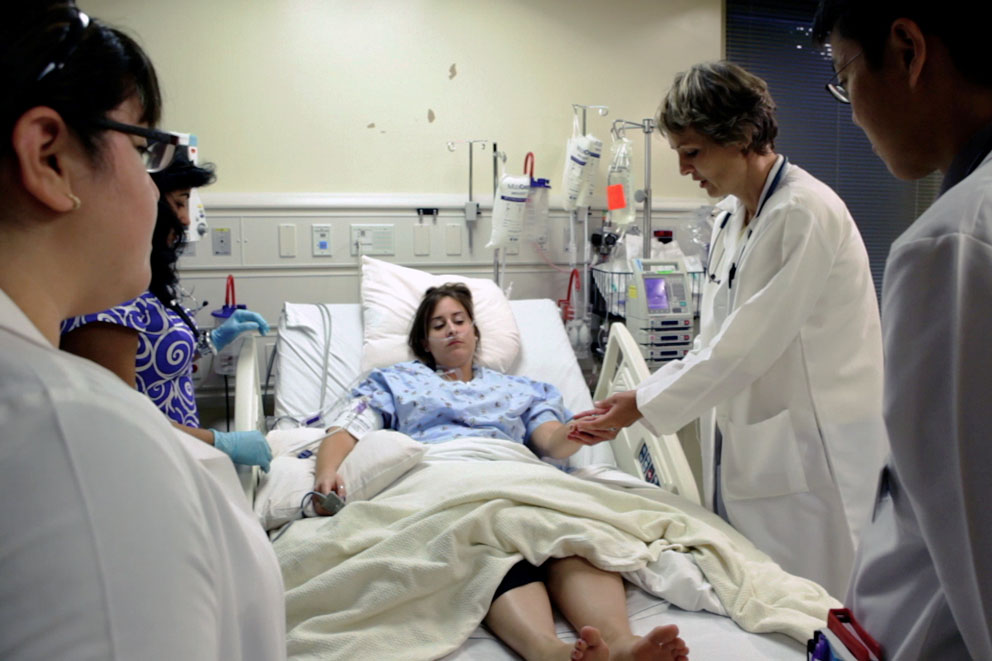Inside KP – September 13, 2017
Kaiser Permanente Northern California care teams are significantly reducing deaths from sepsis, continuously improving treatment, and sharing their knowledge widely.
Millions of people around the world die of sepsis every year, and it is the leading cause of death in U.S. hospitals, but many people don’t know what it is.
Sepsis is a condition caused by the body’s overwhelming response to an infection. It can lead to tissue damage, organ failure, and even death.
Sepsis Awareness Month, held in September, aims to educate and unite people in the fight against sepsis. The condition is responsible for more than a quarter of a million deaths annually in the United States.
According to the Centers for Disease Control and Prevention, four types of infections are often associated with sepsis, including infections of the lung (pneumonia), urinary tract, gut, and skin. Some people with infections are more likely to get sepsis, including those ages 65 and older, infants younger than 1 year, people who have weakened immune systems, and those who have chronic medical conditions such as diabetes, cancer, or AIDS.
Early Identification and Aggressive Care Is Key
Kaiser Permanente has 21 hospitals throughout Northern California, and every 20 minutes someone is admitted to one of them with sepsis. Nine years ago, the organization launched a program to improve the early identification and treatment of these patients.
Tom Russell, MD, Kaiser Permanente Northern California’s clinical lead for sepsis care, said that within 2 years of starting the program, there was dramatic progress.
“We cut our overall mortality rate from sepsis in half, and since that time we continue to decrease our rate,” he said. “Our physicians and hospitals work together in a unified way, and that has played a huge role in our ability to implement and refine our sepsis program to save lives.”
With the program, care teams diagnose sepsis patients within the first hour of arriving at a medical center and follow detailed clinical protocols based on the severity of the case. Patients are given IV fluids, antibiotics, and reassessed frequently to monitor for critical changes such as low blood pressure.
Dr. Russell added that Kaiser Permanente has been ahead of other hospital systems in recognizing that, just as the sickest sepsis patients need early and aggressive care, so do patients with less advanced stages of sepsis.
“With our approach, we are not only seeing fewer deaths from sepsis but also shorter hospital stays and less complications from the infections,” he said.
An Ongoing Commitment to Improve and Share
Since the stakes are so high, Kaiser Permanente care teams throughout Northern California continue to innovate and improve how they treat patients with sepsis.
“We’ve gained a reputation for being very persistent in our efforts to improve our sepsis care,” said Carmen Adams, DNSc, RNC, Kaiser Permanente Northern California’s strategic leader for Quality.
The organization freely shares what it learns through published studies authored by its Division of Research. It also shares its experiences with other hospital systems and U.S. government agencies, such as the Joint Commission Center for Transforming Healthcare and the Centers for Medicare and Medicaid Services.
“We don’t consider this information proprietary,” explained Dr. Russell. “We want others to do the same level of quality work.”
John Morehouse, MD, regional director of Inpatient Quality for The Permanente Medical Group, said he is proud of all that Kaiser Permanente has done to improve sepsis care, work he described as “more of a journey than a destination.”
“Our success in treating sepsis is due to the ongoing efforts of thousands of our dedicated clinicians and nurses who are committed to taking the best care of their patients possible.”
This article originally appeared in Inside KP






